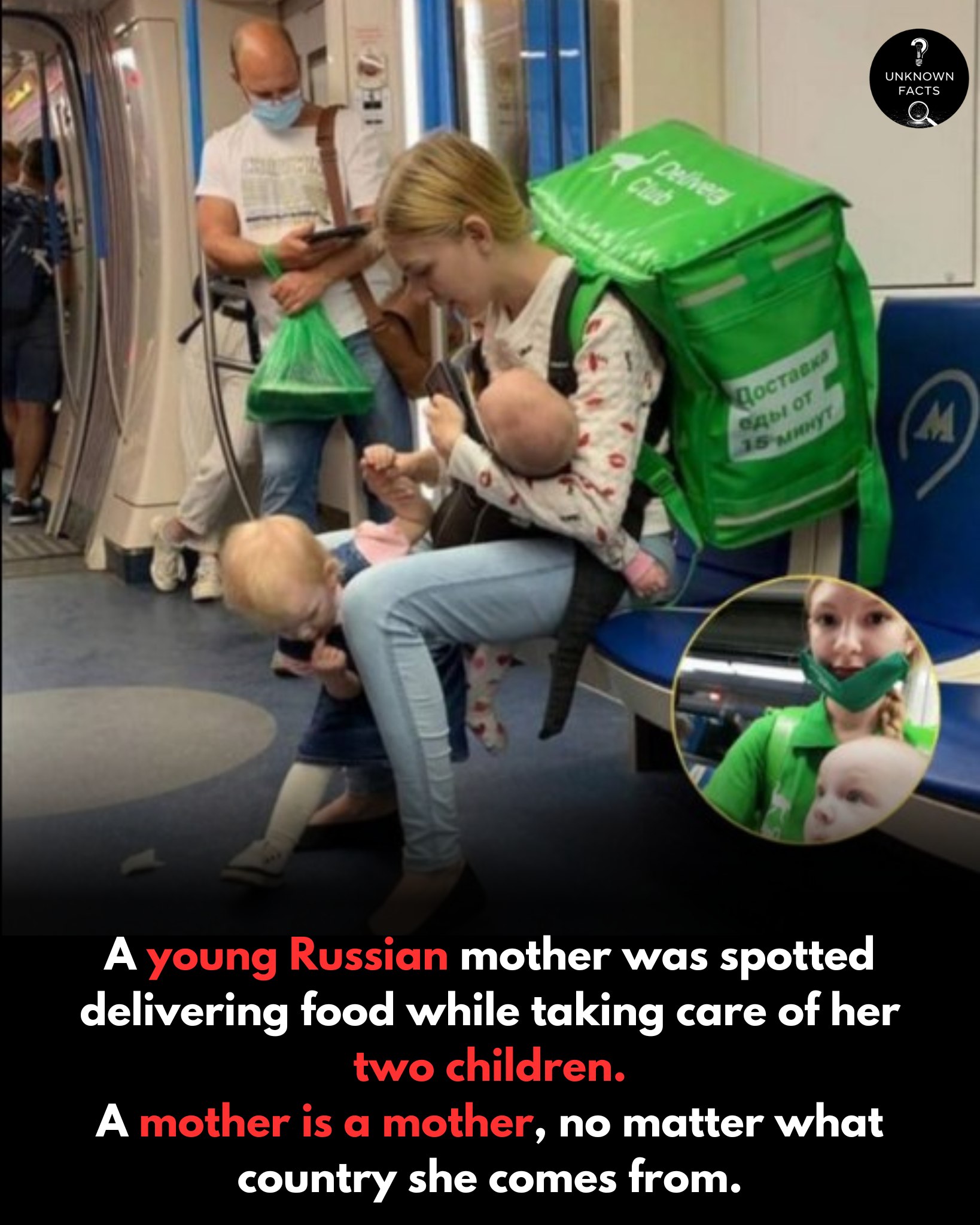The Story Behind the Viral Photograph of Lada Koroleva: A Tale of Hardship and Controversy

In 2020, a photograph of 19-year-old Lada Koroleva from Moscow captured the attention of people worldwide. The image depicted her as she carried a food delivery bag while holding her two young daughters on the subway, striking a powerful image of a young mother balancing the demands of work and childcare. This poignant portrayal of motherhood and resilience struck a chord with many, shedding light on the often unseen struggles faced by single mothers. Lada’s decision to work as a food delivery courier was driven by financial necessity. Estranged from her family and lacking support from her husband, she had no choice but to bring her children with her while working, as she couldn’t afford childcare. The photo resonated deeply, as it highlighted the difficulties many parents face in trying to make ends meet while caring for their children.
Lada’s decision to work as a food delivery courier was driven by financial necessity. Estranged from her family and lacking support from her husband, she had no choice but to bring her children with her while working, as she couldn’t afford childcare. The photo resonated deeply, as it highlighted the difficulties many parents face in trying to make ends meet while caring for their children.
While Lada’s story initially garnered widespread sympathy, it was soon followed by a wave of scrutiny. Some individuals began to question the authenticity of her situation. Reports surfaced suggesting that Lada may have staged the scene to gain attention and financial assistance. One Reddit user claimed that by the time the photo was taken, she was no longer working as a delivery courier, and had used the image as a means to solicit donations from the public. Despite these revelations, the core of Lada’s situation — the challenges of being a single mother trying to provide for her children — remained undeniable. The image, though potentially complicated by circumstances, underscored the difficulties faced by parents in precarious financial situations. It also sparked important conversations about the complex interplay between hardship, public sympathy, and the ethics of online fundraising.
Despite these revelations, the core of Lada’s situation — the challenges of being a single mother trying to provide for her children — remained undeniable. The image, though potentially complicated by circumstances, underscored the difficulties faced by parents in precarious financial situations. It also sparked important conversations about the complex interplay between hardship, public sympathy, and the ethics of online fundraising.
In conclusion, while the image of Lada Koroleva delivering food with her children is genuine, the full context surrounding her story is more layered. It involves a mixture of real struggles and possible exploitation of public sentiment, reminding us of the complexities of hardship and the power of viral images to stir empathy, as well as scrutiny.











